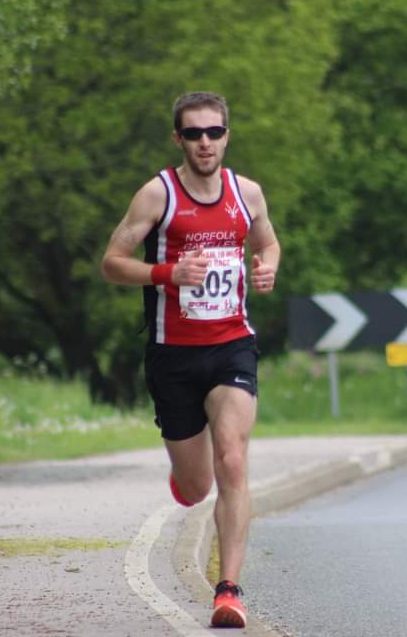I wrote in a previous blog about how to return to speed work faster after your marathon by prioritising recovery post race. In this article, we’ll explore what a typical progression of speedwork looks like in order to get the best from it.
Racing return
The racing period after Spring marathons is usually pretty hectic, with 1-2 races most weekends and mid-week events as well. Picking your return can make the start of your speed work block more enjoyable and fruitful.
Race too soon and you can feel like you’ve lost any speed, when really, you just haven’t recovered enough yet. On the other hand, you’ll likely want to get a marker of current fitness fairly soon, to enable you to start off at the right paces.
My hope would be that prior to your marathon block, you were focusing on speed anyway, and had a 10k to half marathon race or time trial to see what you were capable of, just before focusing on the marathon directly. Unless your marathon block went poorly you’ll likely be just as fit, if not fitter, than you were then. With this assumption, you might not need a race after your marathon to determine paces. You could start where you left off and just get stuck in.
Generally I’d still recommend a race 3 weeks after your marathon to gauge your fitness, but also as a social event, since you may well have not been as active with friends or your club during preparation for the marathon.
The speedwork block
Once you’ve found out your current fitness, it’s time to knuckle down and run fast. Even if you’re fitter than ever, returning to 5k and 10k pace can feel like one hell of a shock.
It’s normal, especially in the first couple of weeks or intervals, to wonder how on earth you’re ever meant to be able to run that pace for race distance when you’re struggling to hold it for reps as short as 400m at times. Trust the process and know that on race day we raise our game physically and mentally.
The progression of effort sessions might look something like this.
Week 1 – 400m efforts at 5k-10k pace, plus an additional hard session.
Week 2 – 600m efforts at 5k-10k pace, plus an additional hard session.
Week 3 – 800m efforts at 5k-10k pace, plus an additional hard session.
Week 4 – 1000m efforts at 5k-10k pace, plus an additional hard session.
Week 5 – 1000m efforts at 5k pace with reduced recovery OR 1 mile efforts at 10k pace with only slightly longer recoveries, plus an additional hard session.
Week 6 – 400m efforts at target race pace, weekend race.
The additional hard sessions could be a long run, or another interval session such as aerobic intervals, cruise intervals, a run with your club’s effort night or something less structured like a Fartlek session.
You might be looking at 8 weeks before you race again, in which case you could have a drop down week of easy running and repeat the week prior to the drop down. Alternatively you could repeat a couple of weeks with slightly reduced recovery times, or increased recovery paces, swapping walk/static recoveries for jogs, or jogging slightly faster in your recovery pace.
The format and types of sessions will vary enormously depending on your long term goals.
A serial marathon runner may well take jog recoveries during most, if not all, interval sessions, with a focus on current PB paces or only slightly faster. This allows for higher overall mileage within the person’s available training time, and will tax their aerobic system more, something that’s ideal when they head back into marathon training in 8-12 week’s time.
Someone who rarely races marathons could possibly be better served by the use of static or walk recovery periods in interval sessions, since this would allow them to reach a higher speed for longer during the work intervals, potentially running at significantly faster than current PB paces.
Your return to speed work and the sessions you choose should be based on your wants and needs. What would be “optimal” for your long term goals might not be your preferred training, so try to find a balance. This should be enjoyable as well as productive, and the balance will never be perfect at any time.
One note for those serial marathon runners. Whether you achieved the time you wanted in your last marathon or not, improving speed will help make you faster across distances and therefore speed work should be part of your training for a while. That said, if you didn’t achieve your time target, or aren’t fit enough to run your new target yet, it’s likely that tactical or nutritional factors in training and racing will be a big factor, so my advice would be to prioritise jog recoveries and higher volume in your speedwork block to take care of the fitness aspects, as well as addressing the “easy wins” of racing more intelligently and fuelling better.
Written by Kyle Brooks, Running Coach based in Norwich, Norfolk

